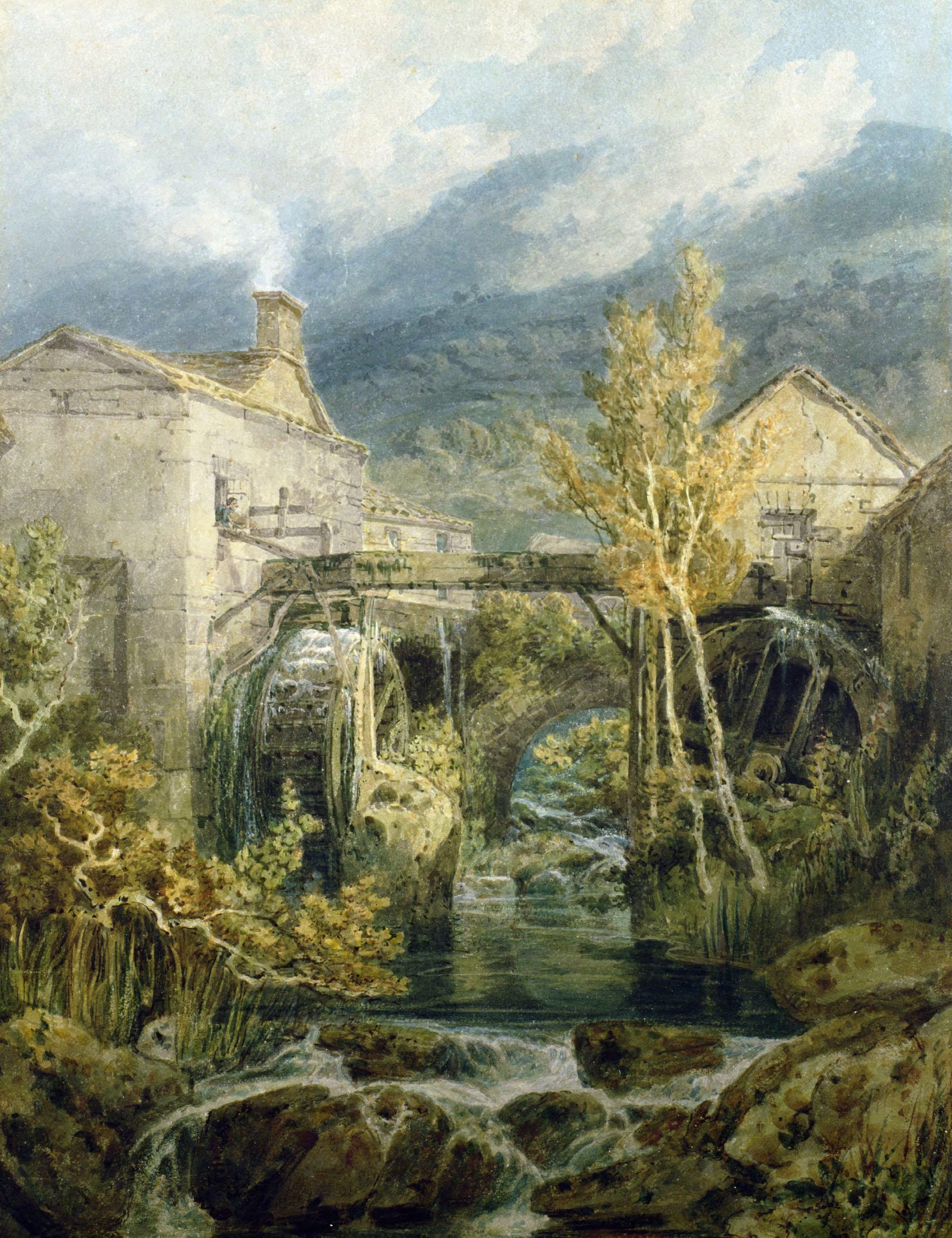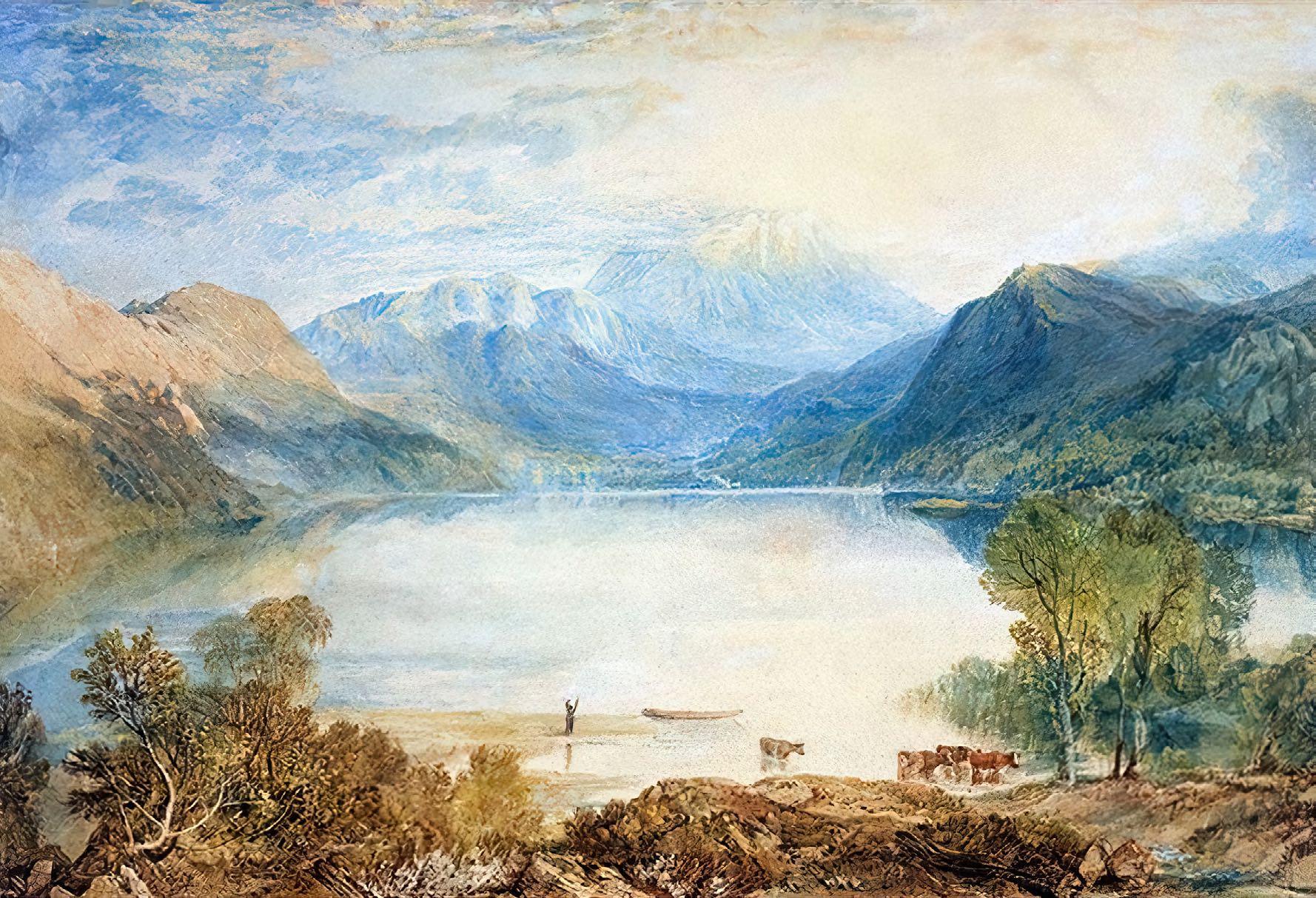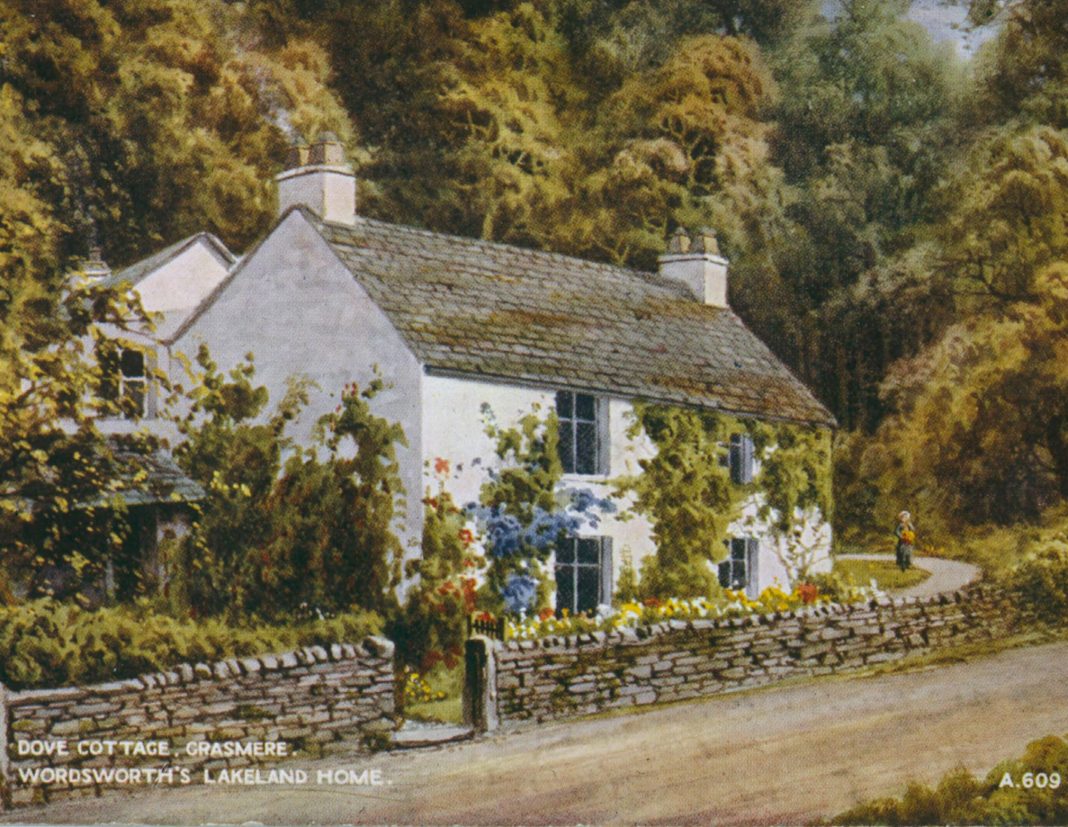I like to imagine her in the early 1800s, lacing up sturdy leather boots and putting on a hat—not the frilly house bonnet of her late-in-life portrait but a proper hat to shed rain and shield from sun. Dorothy Wordsworth stands up, grabs a walking stick, pats the pocket of her skirts to make sure she has her journal, and exits Dove Cottage, where she lives with her brother William, and heads out into the front garden where he and his friend Samuel Taylor Coleridge are gearing up for a long meander.
Coleridge is credited with saying that they were “three persons, but one soul.” Yet when one reads Dorothy’s beautiful journal entries and what the two men said about her, it was not any contribution to the intellectual deliberations but rather her access to her emotions and the environment that they admired. They needed her to ground their lofty discourse in the embodied physical beauty of the places through which traveled. And ground she did, recording stunning details of the Lake District around Grasmere.
Often Dorothy walked twenty miles or more each day, at all times and in all seasons. Endlessly fascinated with the weather and local flora and fauna, Dorothy writes about them as if they were presiding spirits in her world. In May, “It rained very mildly and sweetly.” At the beginning of October, “A showery evening. The moonlight lay upon the hills like snow.” When she describes a favorite birch tree that they pass often on their walks, she writes, “It was a tree in shape with stem and branches, but it was like a Spirit of Water … the other Birch trees that were near it looked bright and chearful (sic), but it was a creature by its own self among them.”

“Then come, my Sister!
come, I pray,
With speed put on your woodland dress;
And bring no book: for this one day
We’ll give to idleness.”
—William Wordsworth
It is not just the precision of her descriptions but their lyric quality that rests her firmly in that same Romantic pantheon as her brother and his friends. She wrote like a painter. Oaks are described vividly: “The shafts of trees show in the light like columns of a ruin.” She composed exquisite metaphors: “The moon shone like herrings in the water.” Describing a storm, she writes, “The trees almost roared, and the ground seemed in motion with multitudes of dancing leaves, which made a rustling sound, distinct from that of the trees.”
Thomas De Quincey wrote that “she was the very wildest (in the sense of most natural) person that I have ever known; and also truest, most inevitable, and at the same time the quickest and readiest in her sympathy with either joy or sorrow, with laughter or with tears, with the realities of life or the larger realities of the poets.” And this is where I fell in love with Dorothy Wordsworth—so quiet among those garrulous Romantic poets. The quiet, wild sister, her skin often deeply tanned by the elements, much against the prevailing custom of her day. The sister with her hands in the ground, harvesting wild plants to bring to the side cottage garden. The sister who spoke to the trees.

I want to walk by her side as she winds among the wens and stone fences, beside waterfalls and out on icy, moonlit nights. To see what she sees in the way her eyes and sensibility records it, not as her brother William translates it later. Dorothy was not concerned with lofty sentiments but with the dirt, the garden, the moon, the rushing wind. For her, the wild was an extension of her self, mirroring back to her deeply felt emotions, even those unspoken to any but the lake. I have a good pair of stout boots and a sturdy hat. I am ready to go.
Quotes are from the Journals of Dorothy Wordsworth. Edited by Mary Moorman. Oxford University Press, 1971.
Find Erin Coughlin Hollowell online at erincoughlinhollowell.com.


































